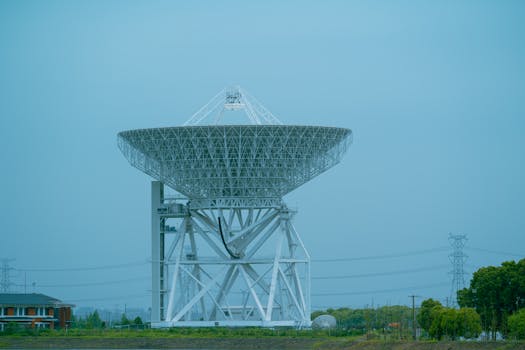The Future is Now: Exploring the Cutting-Edge Innovations in Satellite Telecommunications

The Future is Now: Exploring the Cutting-Edge Innovations in Satellite Telecommunications
Satellite Telecommunications is the focus keyword that will guide us through this article, as we explore the latest advancements in satellite technology and their impact on the future of telecommunications. The future of telecommunications is here, with cutting-edge innovations in Satellite Telecommunications revolutionizing the way we communicate. From high-speed internet to IoT connectivity, satellite technology is pushing the boundaries of what is possible. In this article, we will delve into the latest developments in satellite telecommunications, exploring the key trends, technologies, and innovations that are shaping the industry.
One of the most significant advancements in satellite telecommunications is the development of high-throughput satellites (HTS). These satellites use advanced technology to provide high-speed internet connectivity, making it possible to stream high-definition video and support bandwidth-intensive applications. HTS has enabled the widespread adoption of satellite broadband, providing connectivity to remote and underserved communities around the world. According to a report by NSR, the global HTS market is expected to reach $14.4 billion by 2027, driven by the growing demand for high-speed internet connectivity.
Another key trend in satellite telecommunications is the emergence of Low Earth Orbit (LEO) satellites. LEO satellites operate at an altitude of around 2,000 km, which is much lower than traditional geostationary satellites. This lower altitude enables faster communication and lower latency, making LEO satellites ideal for applications such as real-time video streaming and IoT connectivity. Companies such as SpaceX and OneWeb are launching constellations of LEO satellites, which are expected to provide global coverage and support a wide range of applications. For example, SpaceX’s Starlink constellation is expected to provide high-speed internet connectivity to remote communities, while OneWeb’s constellation will support IoT connectivity and other applications.
Advancements in Satellite Technology
In addition to HTS and LEO satellites, there are several other advancements in satellite technology that are driving innovation in the industry. One of the most significant is the development of advanced propulsion systems, which enable satellites to maneuver and maintain their position in orbit more efficiently. This has reduced the cost of launching and operating satellites, making it possible for more companies to enter the market. Another key development is the use of advanced materials and manufacturing techniques, which has enabled the production of smaller, lighter, and more efficient satellites.
Artificial intelligence (AI) and machine learning (ML) are also being used to improve the efficiency and effectiveness of satellite operations. For example, AI-powered systems can be used to predict and prevent satellite failures, while ML algorithms can be used to optimize satellite communication protocols. According to a report by MarketsandMarkets, the global market for AI in satellite communications is expected to reach $1.4 billion by 2025, driven by the growing demand for more efficient and effective satellite operations.
Applications of Satellite Telecommunications
Satellite telecommunications has a wide range of applications, from providing high-speed internet connectivity to supporting IoT devices. One of the most significant applications is in the provision of broadband services to remote and underserved communities. Satellite broadband has enabled people in these communities to access the internet, supporting economic development and social inclusion. According to a report by the International Telecommunication Union (ITU), satellite broadband has the potential to connect up to 3 billion people in remote and underserved communities around the world.
Satellite telecommunications is also being used to support IoT devices, such as sensors and trackers. These devices are being used in a wide range of applications, from monitoring environmental conditions to tracking the movement of goods and people. According to a report by ABI Research, the global market for satellite IoT connectivity is expected to reach $1.1 billion by 2027, driven by the growing demand for IoT devices and applications.
Conclusion
In conclusion, the future of telecommunications is now, with cutting-edge innovations in Satellite Telecommunications revolutionizing the way we communicate. From high-speed internet to IoT connectivity, satellite technology is pushing the boundaries of what is possible. As the industry continues to evolve, we can expect to see even more innovative applications of satellite telecommunications, from providing broadband services to remote communities to supporting the development of smart cities and industries.
